This post may contain affiliate links. Please read my disclosure policy for more info.
Learn and make these delicious and easy triangle shaped kimbap at home. Triangle (Samgak) kimbap is quick and even fun to make with kids.
Traditional Korean kimbap (gimbap) is similar to a Japanese sushi rice roll (nori maki).
These rolls are wrapped in unseasoned dried seaweed with rice and various ingredients inside.
Though the methods of rolling may be similar (if not the same), the biggest differences between Korean and Japanese rolls are the ingredients that go inside the rice roll.
For example, the Korean version typically has a slightly sweeter rice seasoning whereas the Japanese version uses sushi vinegar (slightly saltier and vinegary) to flavor the rice.
Other big differences are the type of protein used in the rolls.
The Korean version can use pretty much any cooked meat such as ground beef, grilled pork, or canned tuna.
The Japanese version majorly uses seafood inspired proteins such as raw fish, crab, or fried shrimp.
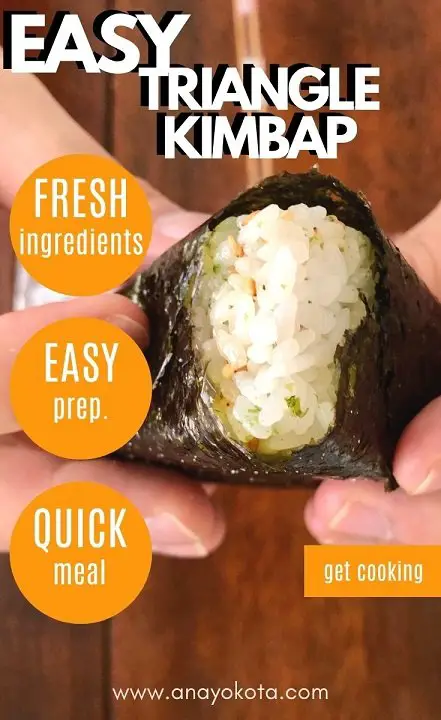
WHAT IS TRIANGLE KIMBAP?
So what is triangle kimbap?
Triangle kimbap in korean is “samgak kimbap” and it is essentially a kimbap that is shaped in a triangle not a cylinder (aka: roll).
Allow me to provide a brief Korean language lesson for the phrase, “samgak kimbap”:
- Triangle in Korean is samgaghyeong (pronounced: Sahm-GAHK-Hyung). The “sam” means 3 and the “gaghyeong” means angle. Abbreviated, Koreans will say, “samgak.” which is just a shorter way of saying triangle.
- Rice roll in Korean is kimbap (pronounced ghim-BAP). THe “kim” means seaweed and the “bap” means cooked rice. Together it means cooked rice wrapped in seaweed.
- Now, put the two phrases together and you have: Samgak Kimbap or triangle shaped rice.
TRIANGLE KIMBAP VS ONIGIRI
But history says that the triangle kimbap was actually invented by the Japanese (SOURCE).
In Japanese “samgak kimbap” is called “onigiri.” The Japanese versions will have pickled fruit such as pickled plum (umeboshi).
Being married to a Japanese American, I am inspired to share with you my Korean-Japanese version of triangle kimbap flavors.
It is super easy and when you break it down, it’s the little things that make it fusion.
For example, I love the onigiri triangle rice in my triangle kimbap.
There is no added sugar aside from what’s inside the sushi vinegar and you can add various toppings such as sesame seeds or furikake.
(Furikake is a Japanese blend of dried seasonings typically sprinkled over rice).
However, for the inside ingredients (aka: the filling), I gravitate towards mixing cooked ground beef with Korean red chili paste. Yum!
For this recipe, I will show you how I make everything from start to finish with two different fillings.
The first filling is my favorite, ground beef with gochujang (Korean red chili paste).
The second is my husband’s favorite, tuna mayo using Japanese mayonnaise.
Once the rice is cooked and ingredients ready, the entire assembly takes less than 5 minutes!
Triangle kimbap is one of the easiest and fastest meals (or snacks) I make for my husband’s breakfast in a pinch.
WHAT YOU WILL NEED
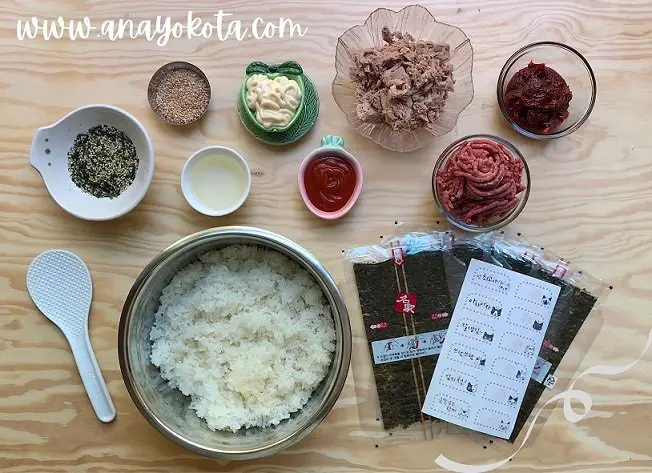
Seaweed Wraps
What makes this version so easy is the ingenious seaweed wraps, which you can purchase online or at your local Korean food market.
These seaweed wraps are specifically made for making triangle kimpap (or onigiri seaweed wrap).
Since the seaweed is delicately cased between two thin sheets of plastic, these wraps are designed to keep the seaweed fresh and crispy until it is time to eat.
Triangle kimbap mold
You can also find these molds online or sold at a Korean super market.
The triangle mold is to help you produce compacted rice balls in triangle shapes.
If you do not have one, I will share how you can still create the shape without using a mold.
Let’s begin!
THE RICE
- 5 cups (1250 g) cooked rice, which is about 1 ⅔ cups (373 g) uncooked rice
- 2 ½ tbsp (30 ml) sushi vinegar
- 2 tbsp (15 g) furikake (I used the nori flavored furikake)
- 1 tbsp (8.87 g) toasted sesame seeds
Instructions
- One the rice is cooked, transfer to a large bowl. Cool it until it is not steaming but still lukewarm
- Mix in the sushi vinegar and fold the rice gently. Avoid from pressing down on the rice as this will smoosh the rice into an unwanted sticky texture
- Once the sushi vinegar is incorporated, mix in the furikake and toasted sesame seeds. Again, always fold in the mixture to avoid clumping up the rice in a paste
- Set aside
SAMGAK KIMBAP FILLING
Ground Beef Gochujang Ingredients
Remember, you can use any kind of finely minced meats such as pork, chicken, or even turkey.
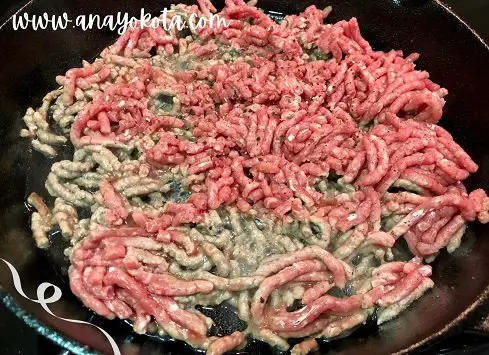
- 1 cup (225 g) ground meat (I used 80/20)
- 1 tsp (4.93 ml) sesame oil
- 2 ½ tbsp (80 g) gochujang (Korean red chili paste)
Instructions
- Heat skillet on medium high heat (I used a cast iron but you can use any clean frying pan)
- Drizzle the sesame oil and coat the pan
- Quickly add the ground beef before the oil burns
- As the ground beef starts to cook, add the gochujang
- Stir until everything is completely incorporated and cooked through
- Take off the heat and set aside
Japanese Tuna Mayo Ingredients
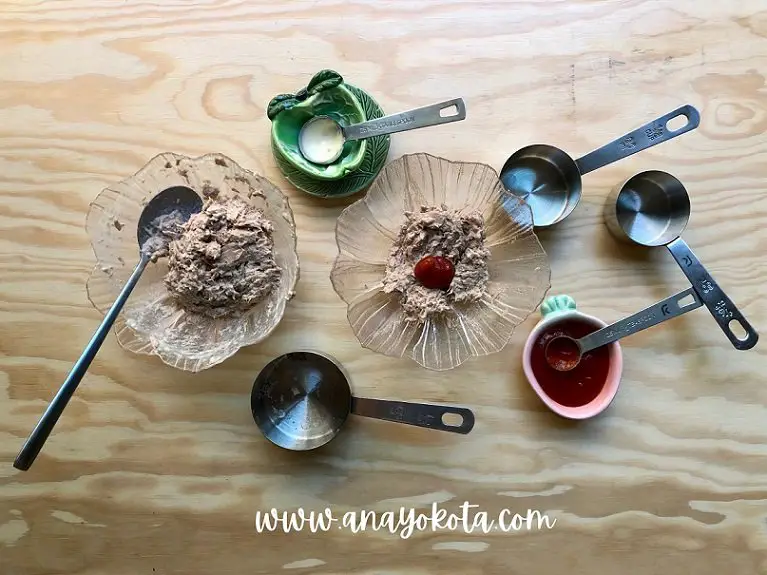
- ½ cup (77 g) canned tuna, drained well (I used tuna in oil because I tend to like the flavor more. But you can use tuna in water.)
- 1 tbsp (14.4 g) Japanese mayonnaise (I used Kewpie)
- 1 tsp (3.25 g) Sriracha sauce (optional) (I used the Red Rooster)
Instructions
- Use a fork to mix all the ingredients together in a bowl.
- Set aside
HOW TO MAKE RICE TRIANGLES
- Make sure you are working on a flat surface
- Place the seaweed wrap face down where the logo and wrapper instructions are facing down on the surface.
- If you purchased a seaweed wrap that has the number 1 at the top center, make sure that part is facing down with the “1” at the top
- Place the triangle kimbap mold at the top so that one of the corners of the triangle is centered at the top
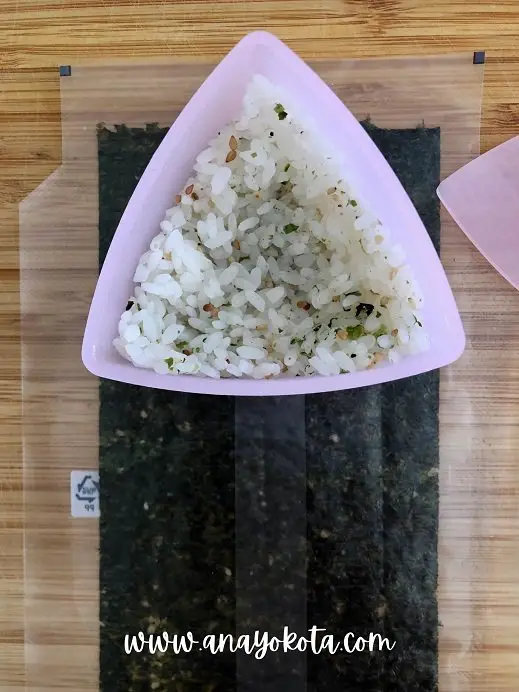
- Fill the mold about ⅔ of the way with the rice mixture.
- Press down on the rice using your figures to shape a well within the mold.
- You should be able to cover the entire bottom and most of the sides of the mold with rice
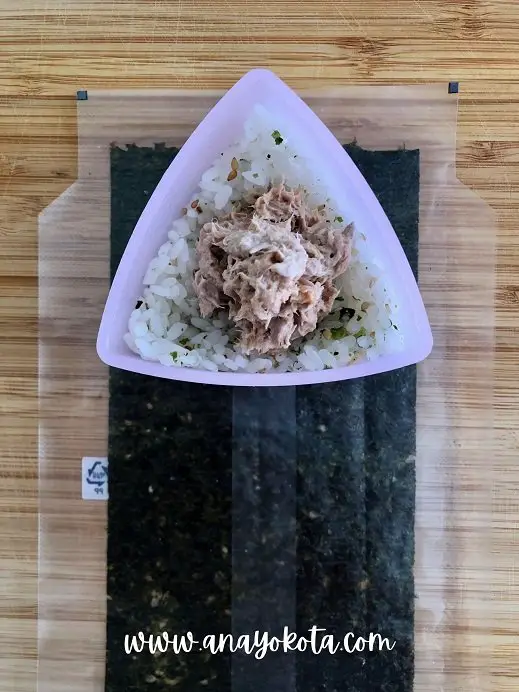
- Carefully scoop in the mixture (about 1 heaping tbsp, 15 g) in the center of the mold.
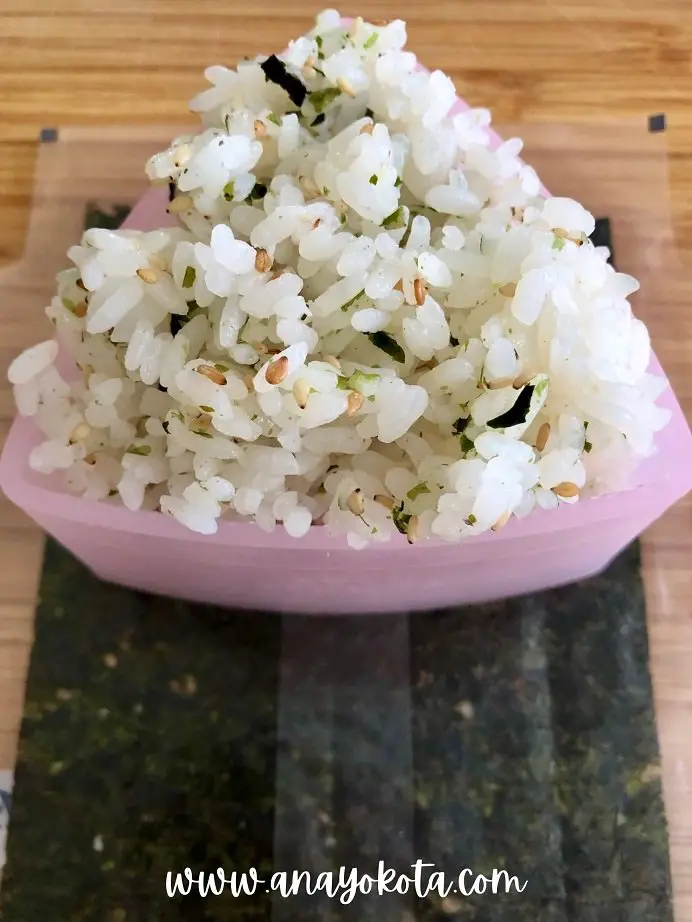
- Place about ¼ cup of rice (or until you are able to top the mold with rice)
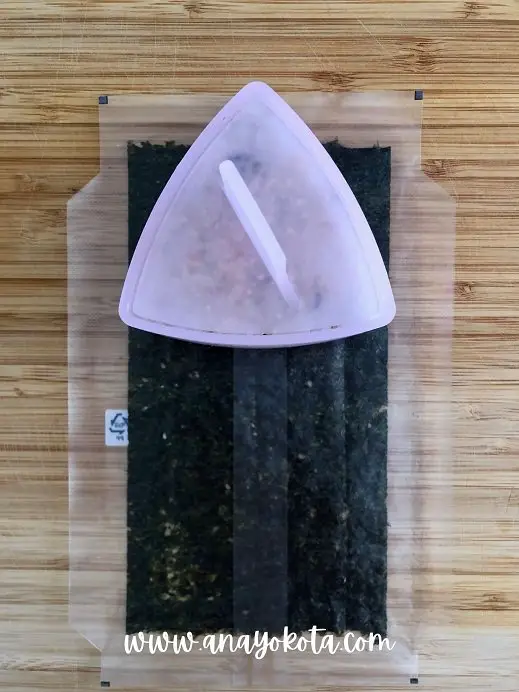
- Place the triangle mold lid on top of the rice and and press down until everything is compacted nicely
- Using one hand to hold the bottom mold in place and the other hand to push the lid through the mold, release the mold onto the seaweed wrapper so that only the rice and filling is left.
- (No need to be the Incredible Hulk. A good gentle push should do it.)
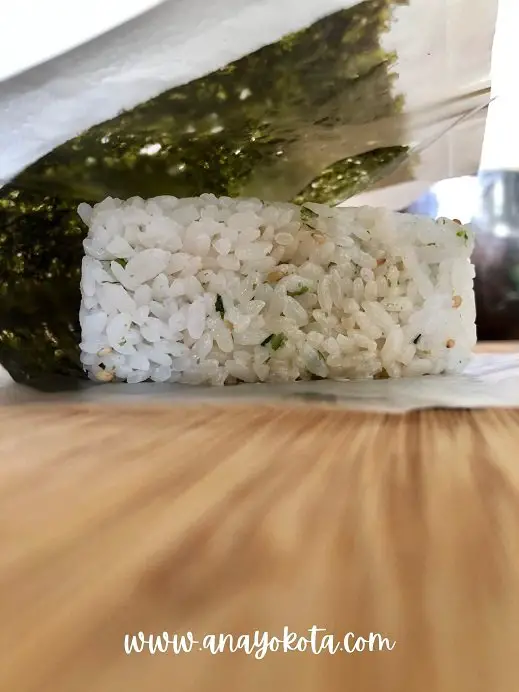
- Fold the bottom section of the seaweed wrapper to the top (almost as if you are folding it “hamburger”style)
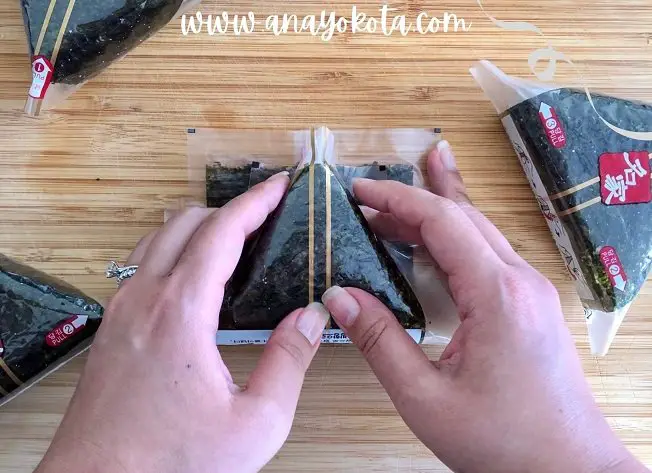
- Tuck in the corners of the seaweed wrapper over the rice triangle one at a time.
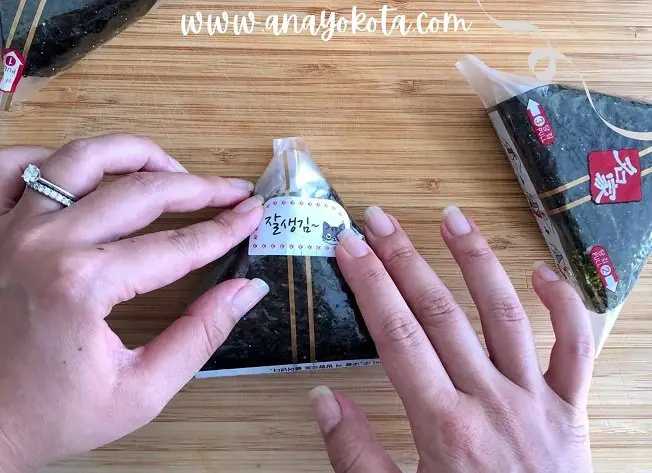
- To prevent it from unraveling, place a paper sticker where the final two edges meet.
HOW TO ENJOY THE SAMGAK KIMBAP RECIPE
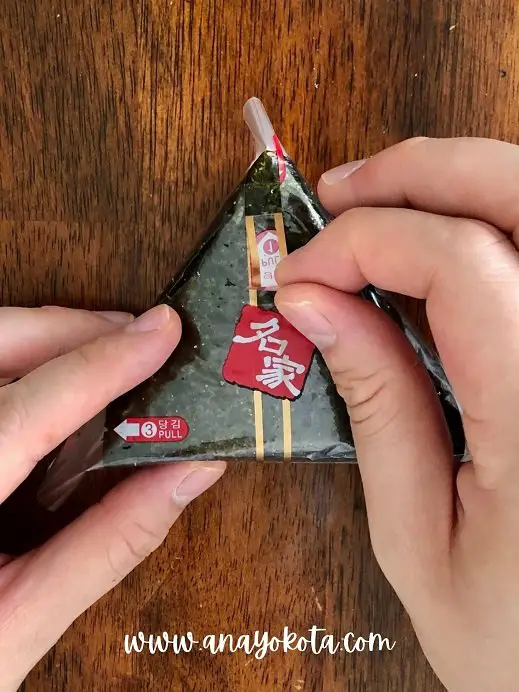
- In order to remove the plastic wrapper like a pro, locate the top of the triangle that has the opening slit. This slit will help unwrap around the triangle.
- If you are using a marked wrapper, it is the corner that has the number “1.”
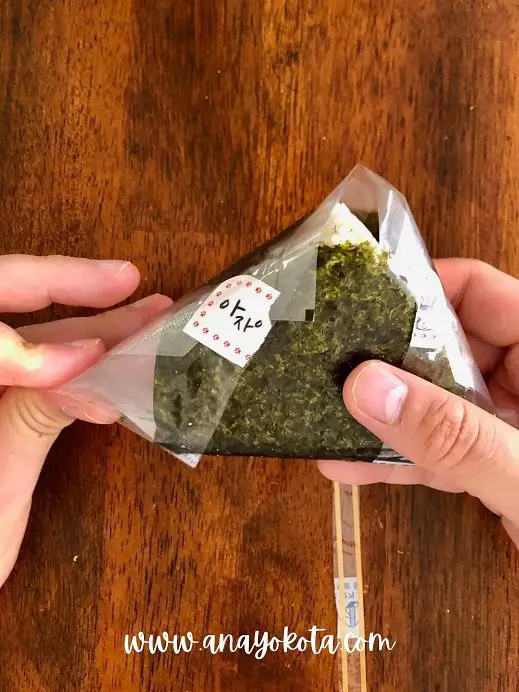
- Then pinch each corner of the plastic one at a time (make sure you are not pinching the seaweed) and remove the wrapper.
- If you have a marked wrapper, the corners will be marked “2” and “3.”
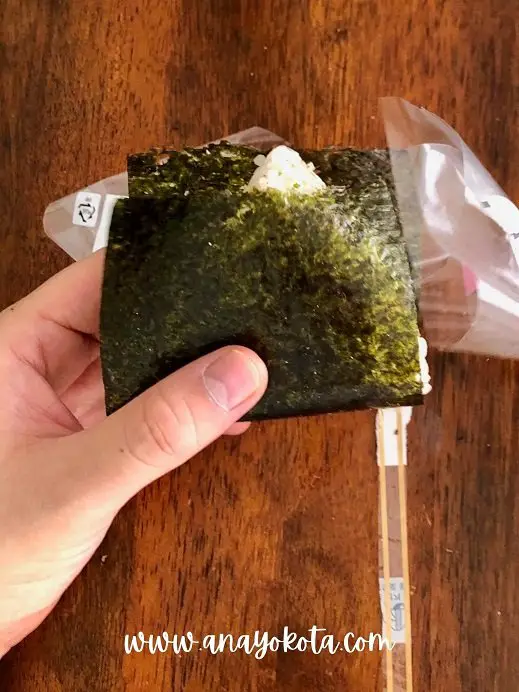
- Tuck in any seaweed that may have come out and enjoy.
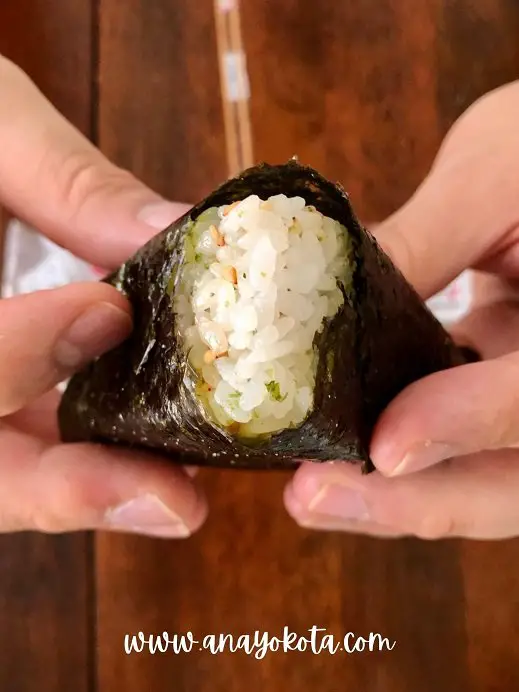
- Which corner is your first bite? 🙂
PRO-TIPS FOR TRIANGLE KIMBAP
Use a cutting board. I like to assemble my kimbap triangle on a board to make for easier cleanup.
As you can see, I used a wooden cutting board to protect the table I was working on.
Don’t make it too saucy. If the fillings are too liquid-y, simply add more meat.
You don’t want it to be too saucy as this may cause leakage in the rice triangles.
Prevent a mess within the mold. When shaping your rice well in the mold, make sure you have a good layer of rice at the bottom and the sides to prevent the filling from spilling out.
This will help you save tons of time when you start to wrap the rice and seaweed.
Triangle kimbap kit. I purchased the triangle kimbap kit.
I found many brands of triangle kimbap online as well as HMart (my local Korean grocery store).
The kit that I purchased was from Amazon.
Taut. When you are tucking in the corners of the seaweed wrapper, it is very helpful to make all your folds (or tucking) taut.
In other words, try to keep everything tightly compacted so that the wrapper doesn’t unfold accidentally.
Paper sticker. When unwrapping the triangle kimbap wrapper, you want to use a sticker that rips easily.
I highly recommend using a paper sticker or a sticker material that easily tears without it stretching.
Washi tape, masking tape, or paper stickers (like the one I’m using) will all work.
The issue with plastic tape is that it will not rip easily. It just makes an unwanted mess. Not fun.
Wrapping Up Triangle Kimbap
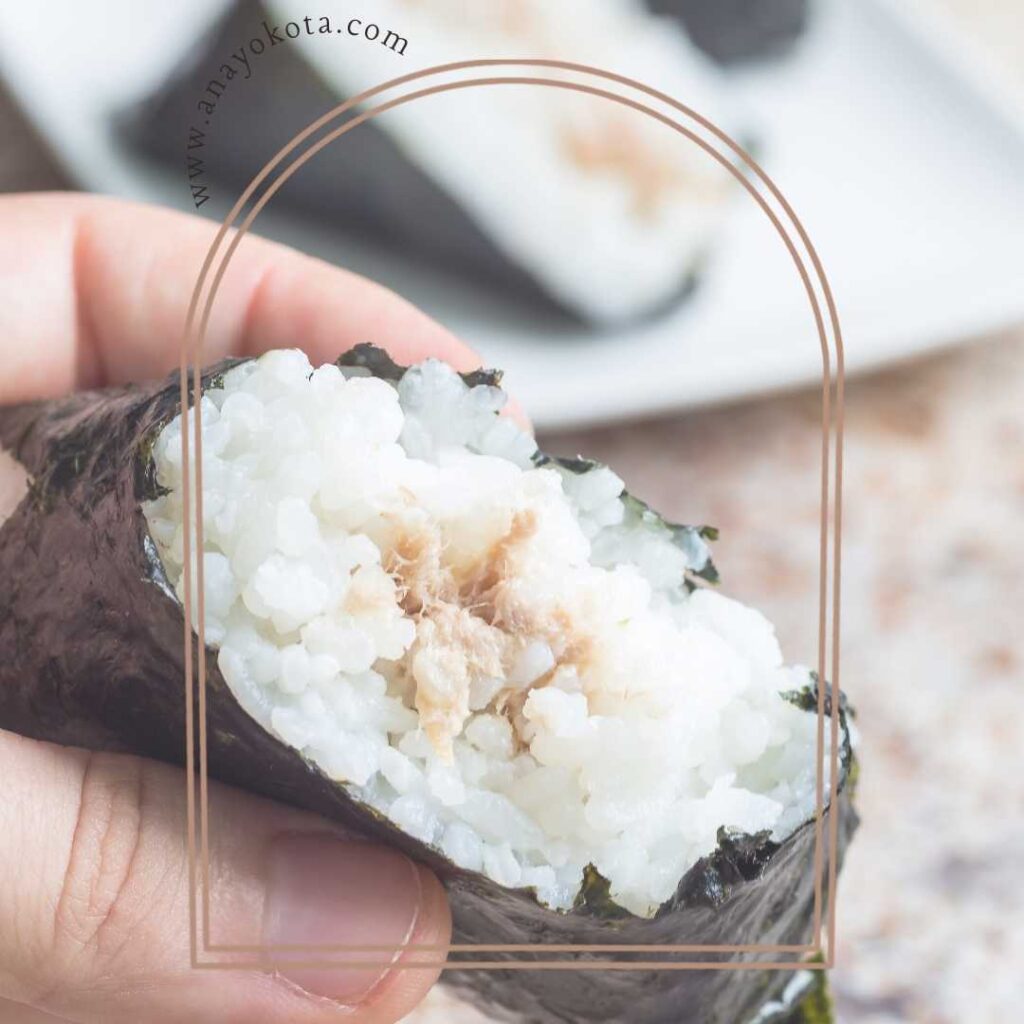
Have you experimented with different fillings for your triangle kimbap? You’ll be amazed by the range of delectable, unique fillings you can create!
Take these for your next Korean Picnic or Japanese picnic. These are perfect for finger foods on the go!
If you tried this recipe or created your own special filling, please comment down below and share then with us.
I’m a huge fan that has anything to do with “seaweed wrap food.” If you would like to see more posts like these on the blog, please let me know.
What more Asian inspired dishes? Check out Japanese Kanten. It is a perfect combination if you are looking for a light and easy dessert.
For more Korean inspired foods, here are few recipes worth trying:
Gamjatang: learn how to make this hearty pork bone soup with warm vegetables and spicy flavors.
If you are looking for a cozy winter one pot meal, this one is for you!
Korean Bacon: Ever wondered the difference between Korean bacon and Western style bacon?
This article explains not only the difference but the various ways Koreans love eating bacon. Click to learn more.
Yubuchobap: Did you like this easy triangle kimbap recipe? Then you will absolutely enjoy learning another compact sized rice ball recipe.
Yubuchobap is just as easy and full of diverse flavor profiles like samgak gimbap. Try it today!

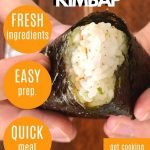
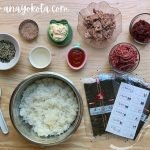
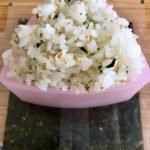

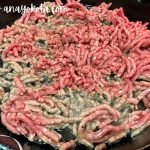
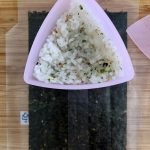
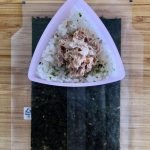

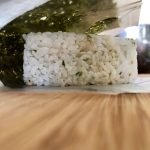
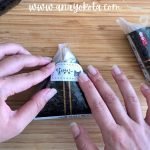
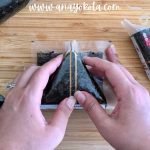
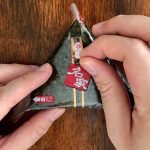
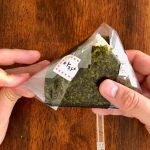
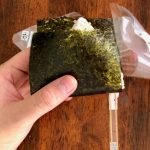
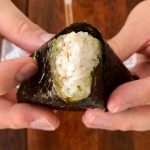
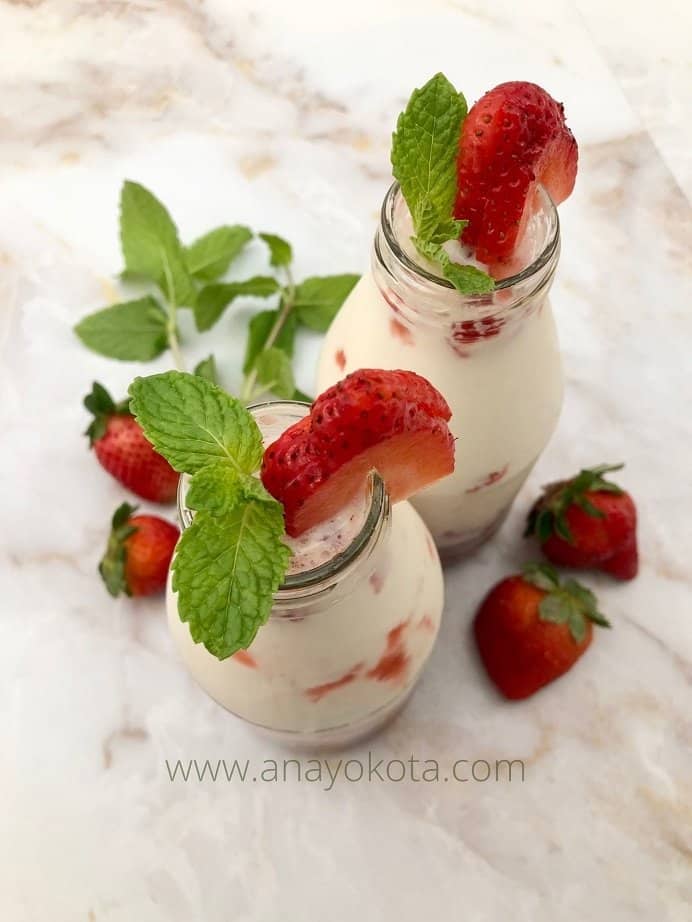
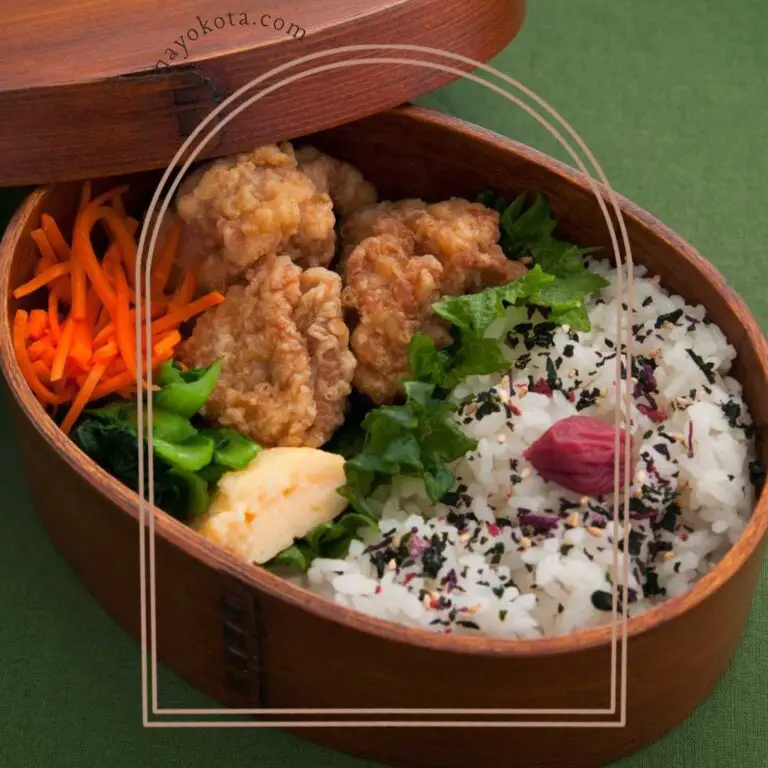
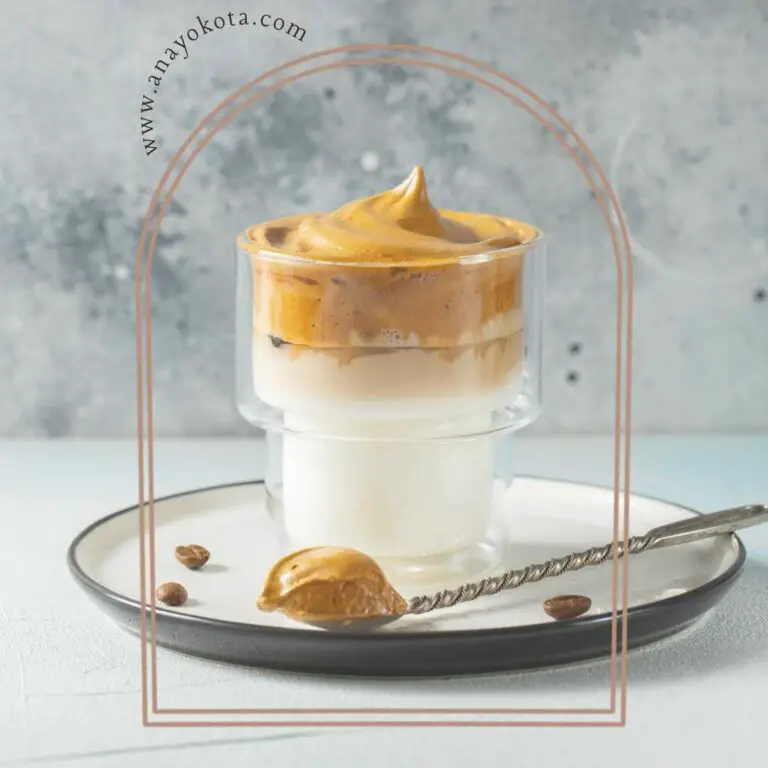
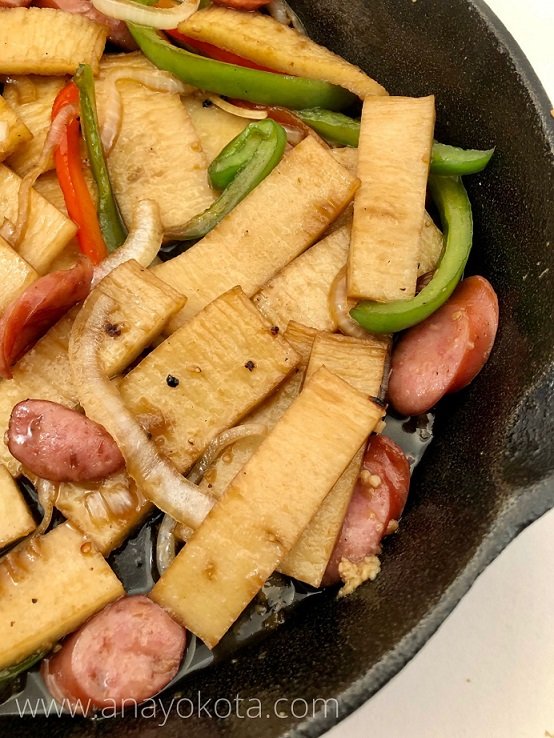
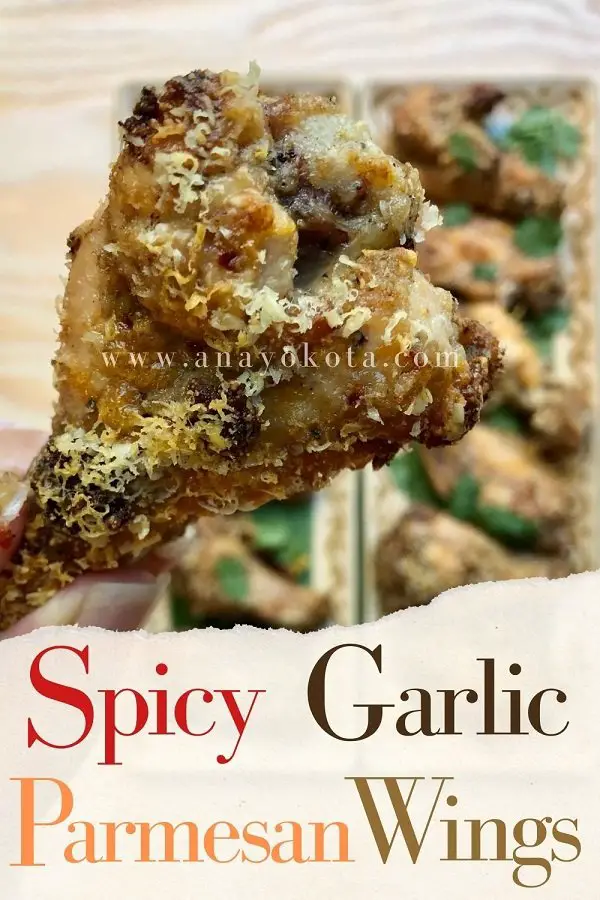
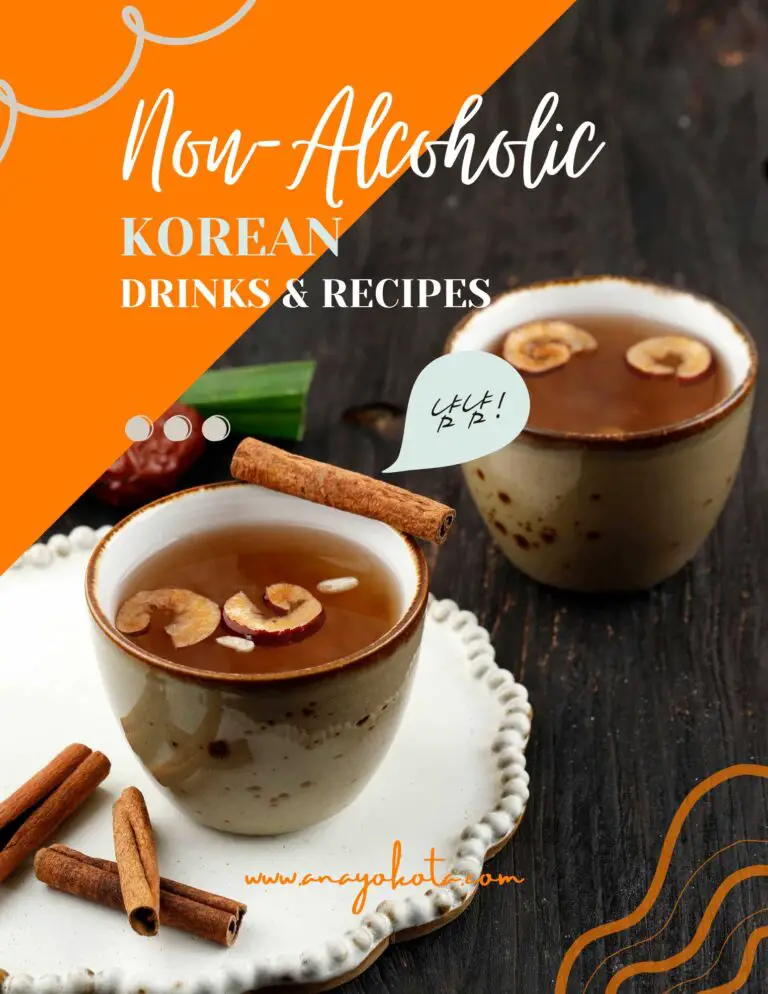
I use sweet pulled pork, for the inside.yum!
Can u out eel in onigiri?
Yes! You can certainly put cooked eel in onigiri.
Hi,
I am just curious what kind of tuna did you use? And or do you have a preference? Thank you
Hello! I used canned tuna in water. I prefer tuna in water or any tuna that has been cooked without seasoning simply because I like to add my own seasoning and oils. One time, I chose to cook raw tuna on my charcoal grill and gave it a nice charcoal flavor. Hope you can give it a try. 🙂